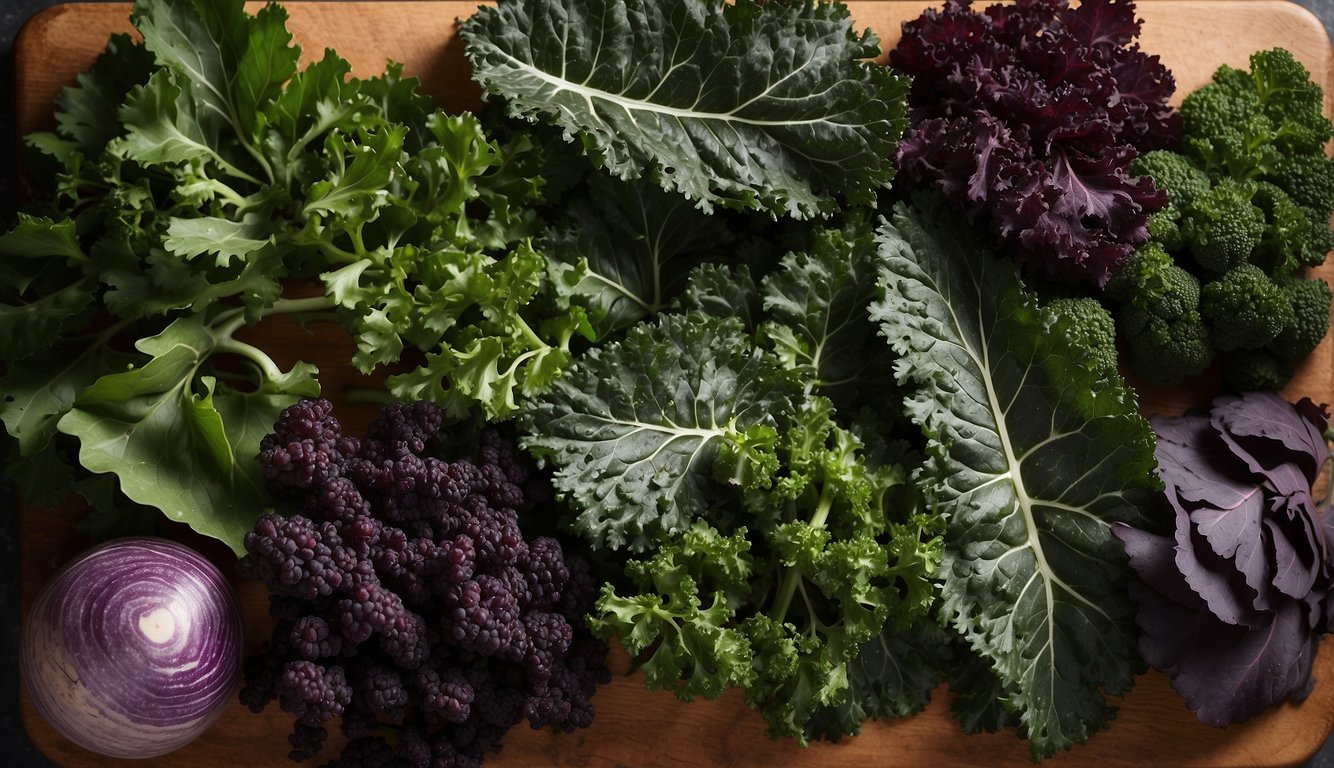TheHerbProf.com is a treasure trove of knowledge for those interested in natural healing and herbal remedies. The website is run by Paul Johnston MD. A naturopathic who has not only received extensive education in the field but also has personal experience in self-healing.
I have always been fascinated by the health benefits of kale. Kale is a leafy green vegetable that is packed with essential nutrients. It is a superfood that has become increasingly popular in recent years due to its high nutrient content and potential health benefits. One of the reasons for its popularity is the variety of types of kale leaves available.
There are several types of kale leaves, each with its unique characteristics and nutritional value. Some of the most common types of kale are curly kale, Tuscan kale, and Red Russian kale. Each type of kale has a slightly different taste and texture, making it a versatile ingredient in many dishes. In this article, I will discuss the different types of kale leaves and their nutritional benefits, so you can choose the best one for your needs.
Types of Kale
When it comes to kale, there are many different varieties to choose from. In this section, I will cover the most popular types of kale leaves.
Curly Kale
Curly kale is one of the most common types of kale. It has curly, green leaves and a slightly bitter taste. It’s often used in salads, smoothies, and soups. Curly kale is also packed with nutrients, including vitamin C, vitamin K, and fiber.
Lacinato Kale
Lacinato kale, also known as dinosaur kale, has dark green, long, narrow leaves. It has a sweeter taste than curly kale and a more tender texture. Lacinato kale is often used in Italian cuisine, such as in soups or as a side dish. It’s also a great source of vitamins A, C, and K.
Red Russian Kale
Red Russian kale has flat, broad leaves that are purple-tinged with green. It has a mild, nutty flavor and is often used in salads or sautéed as a side dish. Red Russian kale is an excellent source of vitamins A, C, and K, as well as calcium and iron.
Siberian Kale
Siberian kale has blue-green, frilly leaves that are slightly sweeter than other types of kale. It’s often used in stir-fries or as a side dish. Siberian kale is packed with nutrients, including vitamins A, C, and K, as well as calcium and iron.
Ornamental Kale
Ornamental kale, also known as salad savoy, has frilly leaves that come in a variety of colors, including purple, red, white, and pink. It’s often used as a decorative element in salads or as a garnish. Ornamental kale is also packed with nutrients, including vitamins A, C, and K.
There are many different types of kale leaves, each with its own unique flavor and nutritional benefits. Whether you prefer curly kale, lacinato kale, red Russian kale, Siberian kale, or ornamental kale, you can enjoy the many health benefits that this superfood has to offer.
Kale in Cuisine

Kale is a versatile leafy green that can be used in a variety of dishes. From salads to soups, kale can be prepared in many different ways to suit your taste. In this section, I will discuss some of the ways you can use kale in your cooking.
Raw Kale Preparations
Raw kale can be used in salads, smoothies, and even as a snack. When using raw kale, it is important to remove the tough stems and massage the leaves with a little bit of olive oil to soften them. This will make the kale easier to eat and digest.
Kale salads are a great way to incorporate raw kale into your diet. You can make a simple kale salad by combining chopped kale with your favorite dressing, or you can add other ingredients such as avocado, nuts, or cheese to make a more substantial salad.
Another way to use raw kale is in smoothies. Kale is a great addition to green smoothies and can add a boost of nutrition to your morning routine. Simply blend kale with your favorite fruits and some liquid, such as almond milk or water.
Lastly, kale chips are a tasty and healthy snack that can be made by baking kale leaves in the oven with a little bit of olive oil and salt. Kale chips are a great alternative to potato chips and are a great way to get your greens in.
Cooked Kale Dishes – Types of Kale Leaves
Kale can also be cooked in a variety of ways. It can be added to soups, stews, stir-fries, and sautéed as a side dish.
Kale soup is a delicious and comforting dish that is perfect for a cold winter day. You can make a simple kale soup by sautéing onions and garlic in a pot, adding kale and broth, and letting it simmer until the kale is tender.
Another way to use cooked kale is in stir-fries. Kale can be added to stir-fries with other vegetables and protein for a quick and healthy meal. You can also sauté kale with garlic and olive oil as a simple side dish.
Lastly, roasted kale is a great addition to any meal. Simply toss kale with olive oil and salt and bake in the oven until crispy. Roasted kale can be used as a topping for salads or as a side dish.
Kale is a versatile leafy green that can be used in a variety of dishes. Whether you prefer raw or cooked kale, there are many ways to incorporate this nutritious vegetable into your diet.
Cultivation and Varieties – Types of Kale Leaves
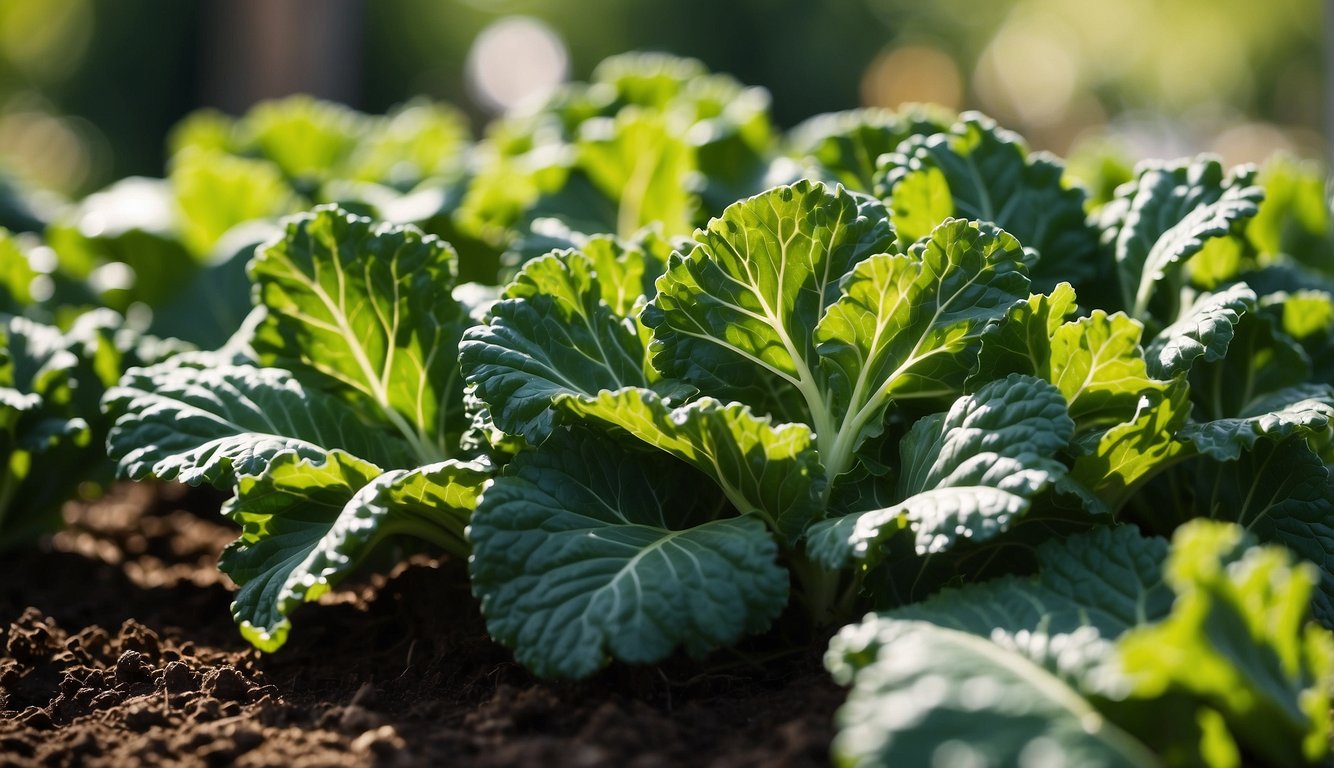
Growing Kale
Kale is a cool-weather crop that is easy to grow and is highly adaptable to different growing conditions. As a member of the brassica family, kale prefers well-draining soil with a pH between 6.0 and 7.5. It is best to plant kale in the early spring or late summer, as it thrives in cooler temperatures.
Kale seeds should be planted about 1/4 to 1/2 inch deep, and spaced about 12 inches apart. Once the seedlings have emerged, thin them to about 8-10 inches apart to allow for proper growth. Kale requires consistent moisture, so be sure to water regularly, especially during dry spells.
Types of Kale Leaves – Kale Varieties by Season
Kale comes in many different varieties, each with its own unique flavor and texture. Some popular kale varieties include Winterbor, Red Russian, and Lacinato (also known as Tuscan or Dinosaur kale).
Kale varieties can be divided into two categories: baby kale and mature plants. Baby kale is harvested when the leaves are young and tender, while mature plants are harvested when the leaves are larger and more robust.
Different kale varieties are also suited for different seasons. For example, curly kale is best grown in the fall and winter, while Red Russian kale is better suited for the spring and summer months.
Heirloom and Hybrid Kales
There are many different types of kale to choose from, including heirloom and hybrid varieties. Heirloom kales are open-pollinated, meaning that they have been passed down for generations and have not been genetically modified. They are often more flavorful and have a wider range of colors and textures than hybrid kales.
Hybrid kales, on the other hand, are the result of crossbreeding different kale varieties to create a new and unique plant. They are often more disease-resistant and have a longer shelf life than heirloom kales.
Overall, kale is a versatile and nutritious crop that is easy to grow and comes in many different varieties. Whether you are looking for a cold-hardy kale for the winter months or a sweet and tender baby kale, there is a kale variety that is sure to meet your needs.
Nutritional Profile – Types of Kale Leaves

As a leafy green vegetable, kale is a highly nutritious food choice. It is packed with vitamins, minerals, and antioxidants that can support overall health and well-being. In this section, I will discuss the nutritional profile of kale, including its vitamins and minerals, as well as its dietary fiber and antioxidant content.
Vitamins and Minerals – Types of Kale Leaves
Kale is an excellent source of many important vitamins and minerals. One cup of chopped kale contains approximately:
- Vitamin A: 206% of the Daily Value (DV)
- Vitamin C: 134% of the DV
- Vitamin K: 684% of the DV
- Calcium: 9% of the DV
- Potassium: 9% of the DV
Vitamins A, C, and K are all important for maintaining healthy skin, immune function, and bone health. Calcium is essential for strong bones and teeth, while potassium helps regulate blood pressure and supports heart health.
Dietary Fiber and Antioxidants
In addition to its vitamin and mineral content, kale is also a good source of dietary fiber and antioxidants. One cup of chopped kale contains approximately 2.6 grams of fiber, which can help promote healthy digestion and reduce the risk of chronic diseases such as heart disease and diabetes.
Kale is also rich in antioxidants, which are compounds that can help protect the body against damage from harmful molecules known as free radicals. Some of the antioxidants found in kale include beta-carotene, lutein, and zeaxanthin, all of which can help promote healthy vision and reduce the risk of certain types of cancer.
Overall, kale is a highly nutritious food that can provide a range of health benefits. By incorporating kale into your diet on a regular basis, you can help support your overall health and well-being.
Kale in the Market – Types of Kale Leaves

When it comes to kale, there are many different varieties available in the market. From mature leaves to baby leaves, there are many options to choose from. In this section, I will discuss how to select and store kale to ensure that you get the best quality.
Selecting Kale – Types of Kale Leaves
When selecting kale, look for leaves that are firm and crisp. Avoid leaves that are wilted or have brown spots. The color of the leaves can vary depending on the variety, but they should be vibrant and not faded. Generally, the darker the leaves, the more mature the kale is, and the sweeter it will taste.
If you are looking for the sweetest kale, try baby kale. Baby kale has tender leaves that are sweeter than mature kale. It is also more delicate and can be used in salads or as a garnish.
Storing Kale
To store kale, remove any rubber bands or ties and place the leaves in a plastic bag. Squeeze out as much air as possible before sealing the bag. Store the bag in the refrigerator and use the kale within a week.
If you have mature leaves, you can remove the stems and chop the leaves into bite-sized pieces before storing them. This will make it easier to use the kale in recipes later.
Selecting and storing kale is easy if you know what to look for. By following these simple tips, you can ensure that you get the best quality kale for your recipes.
Kale and its Relatives – Types of Kale Leaves
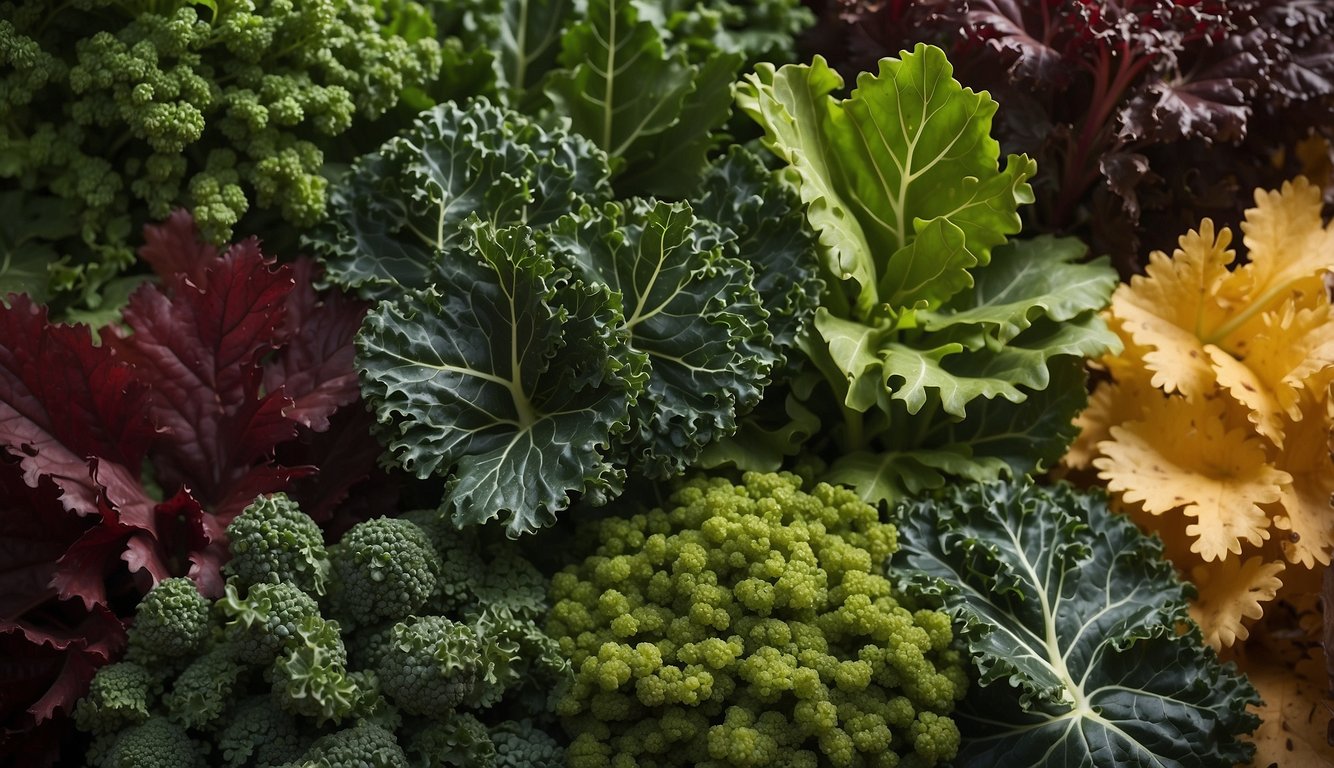
As a member of the Brassica oleracea family, kale is closely related to several other leafy greens, including cabbage, broccoli, cauliflower, and Brussels sprouts. These vegetables share many of the same health benefits, including high levels of vitamins A, C, and K, as well as fiber and antioxidants.
Brassica Oleracea Variants – Types of Kale Leaves
Kale is just one of several variants of the Brassica oleracea plant. The plant’s leaves can be either smooth or curly, and the color can range from light green to dark blue-green. Some of the most popular kale variants include:
- Curly kale: This is the most common type of kale, with tightly curled leaves and a slightly bitter taste.
- Lacinato kale: Also known as Tuscan kale, this variety has long, narrow leaves with a wrinkled texture.
- Red Russian kale: This type of kale has flat, fringed leaves that are reddish-purple in color.
- Chinese kale: Also known as Chinese broccoli or gai lan, this vegetable has long, thin stems with dark green leaves.
Similar Leafy Greens
Kale is not the only leafy green that is packed with nutrients. Other members of the Brassica family, as well as other similar vegetables, can also be a healthy addition to your diet. Some of these greens include:
- Broccoli: This vegetable is high in vitamin C and fiber, and it has been linked to a lower risk of cancer.
- Cauliflower: Like broccoli, cauliflower is rich in vitamin C and fiber. It can also be used as a low-carb substitute for rice or mashed potatoes.
- Collard greens: These greens are similar to kale in taste and texture, and they are also high in vitamins A, C, and K.
- Chinese broccoli: Also known as gai lan, this vegetable is similar to kale in taste and texture. It is often used in stir-fries and soups.
Incorporating these leafy greens into your diet can provide a variety of health benefits. Whether you prefer kale, broccoli, or another member of the Brassica family, adding more of these vegetables to your meals can help you meet your nutritional needs and support overall health and wellness.
Preparing Kale – Types of Kale Leaves
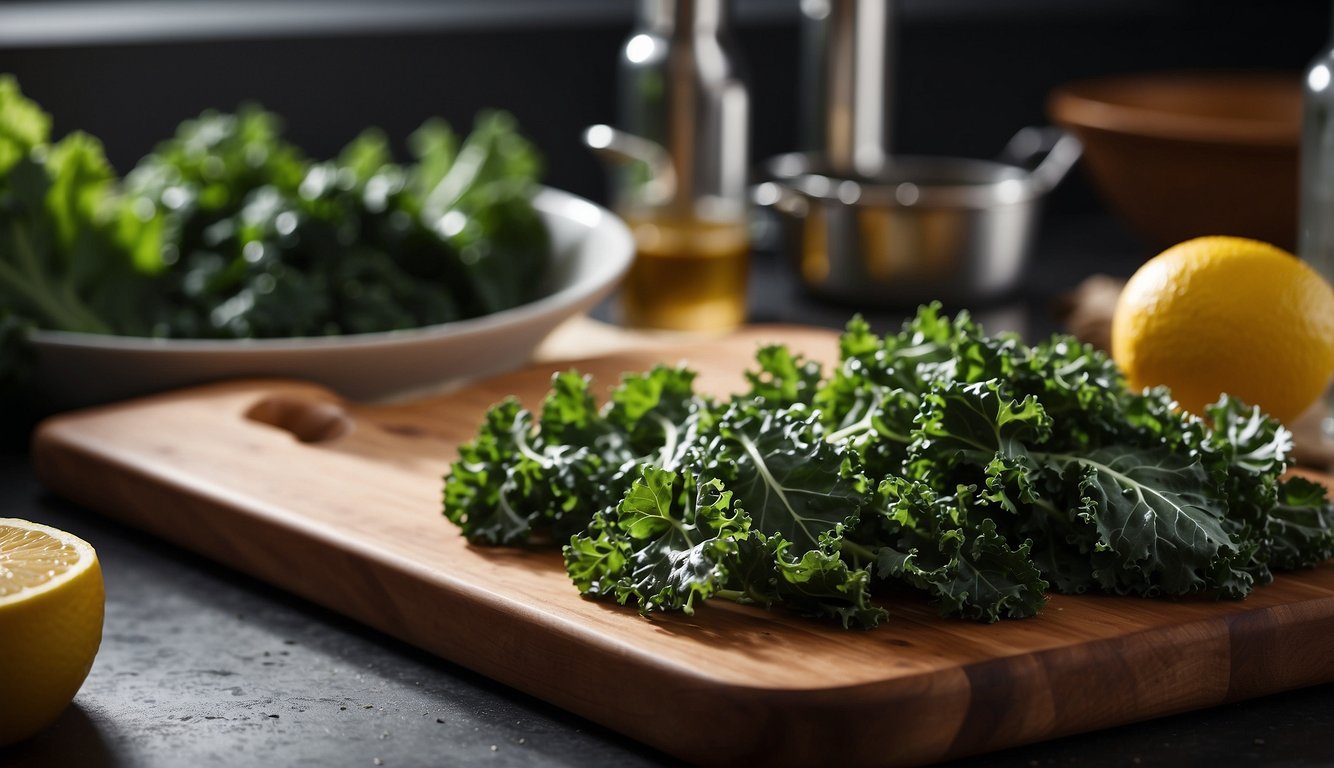
Kale is a versatile leafy green that can be enjoyed in a variety of dishes, from salads to soups to pasta sauces. However, before using kale in any recipe, it is important to properly prepare it. In this section, I will share some tips on how to wash, de-stem, and cook kale.
Washing and De-stemming
The first step in preparing kale is to wash it thoroughly. Rinse the leaves under cold water, and then pat them dry with a clean towel or paper towel. It is important to remove any dirt or debris that may be on the leaves.
Next, you will need to de-stem the kale. To do this, simply hold the stem at the base of the leaf with one hand, and then use your other hand to pull the leaf away from the stem. The stems can be tough and fibrous, so it is best to remove them before cooking.
Cooking Techniques – Types of Kale Leaves
Kale can be cooked in a variety of ways, depending on your preference. Here are some popular cooking techniques:
Sautéing
Sautéing is a quick and easy way to cook kale. Simply heat some olive oil in a pan over medium-high heat, and then add the kale. Cook for a few minutes, stirring occasionally, until the leaves are tender.
Roasting
Roasting kale is a great way to make kale chips. Preheat your oven to 350°F. Remove the stems from the kale leaves, and then tear the leaves into bite-sized pieces. Toss the kale with some olive oil and salt, and then spread the leaves out on a baking sheet. Bake for 10-15 minutes, or until the leaves are crispy.
Boiling
Boiling kale is a simple way to cook it. Bring a pot of salted water to a boil, and then add the kale. Cook for 2-3 minutes, or until the leaves are tender. Drain the kale, and then season with salt and pepper to taste.
Massaging
Massaging kale is a technique used to make the leaves more tender and flavorful. Simply tear the kale leaves into bite-sized pieces, and then place them in a bowl. Drizzle some olive oil over the leaves, and then use your hands to massage the leaves for a few minutes. The leaves will become softer and more tender, making them easier to eat raw in salads or other dishes.
Preparing kale is an important step in using it in your cooking. By following these tips on washing, de-stemming, and cooking kale, you can enjoy this nutritious leafy green in a variety of delicious ways.
Kale in Gardening – Types of Kale Leaves

As an avid gardener, I am always looking for new and interesting plants to grow in my garden. Kale is an excellent choice for any garden, not just because it is a nutritious and delicious vegetable, but also because it is a beautiful plant that can add a lot of visual interest to your garden. In this section, I will discuss two ways to use kale in gardening: ornamental use and companion planting.
Ornamental Use – Types of Kale Leaves
Kale is not just a vegetable; it is also a beautiful ornamental plant that can be used to add color and texture to your garden. There are many different types of kale leaves that can be grown for ornamental use, including frilly, dazzling blue, redbor kale, scarlet kale, and Portuguese kale.
One way to use kale for ornamental purposes is to plant it in a container or a raised bed. Kale looks great in a container because it can be grown in a variety of colors and textures, and it can be easily moved around to different locations in your garden. Another way to use kale for ornamental purposes is to plant it in a mixed border. Kale looks great when planted with other plants that have contrasting colors and textures, such as marigolds, petunias, and snapdragons.
Companion Planting
Kale is also an excellent companion plant because it can help to repel pests and attract beneficial insects to your garden. For example, planting kale next to tomatoes can help to repel tomato hornworms, which can be a major pest for tomato plants. Kale can also attract beneficial insects, such as ladybugs and lacewings, which can help to control aphids and other pests in your garden.
In addition to repelling pests and attracting beneficial insects, kale can also help to improve the soil in your garden. Kale is a member of the brassica family, which means that it is a heavy feeder and can deplete the soil of nutrients. However, kale also has deep roots that can help to break up compacted soil and improve drainage. When kale is harvested, the leaves can be left on the soil as a mulch, which can help to improve the soil structure and add nutrients back into the soil.
Kale is an excellent plant to grow in your garden for both its nutritional value and its ornamental value. By using kale for ornamental purposes and companion planting, you can add color and texture to your garden while also improving the health of your soil and repelling pests.
Types of Kale Leaves and Their Garden Companions
Let’s dive into the leafy world of kale and its plant pals.
First up, we have curly kale and beets. Beets and kale are garden buddies. Beets help to enrich the soil, which curly kale loves!
Next, let’s talk about dinosaur kale and garlic. Garlic is a fantastic companion for dinosaur kale. It helps to deter pests that love to munch on your kale!
Ever heard of red Russian kale? It loves being planted near peas. Peas fix nitrogen in the soil, which red Russian kale benefits from!
And let’s not forget ornamental kale and marigolds. Marigolds help to deter pests that would otherwise be attracted to ornamental kale.
Remember, folks, gardening is all about creating a harmonious ecosystem. So, let’s keep sowing, keep growing, and keep enjoying the fruits (and veggies) of our labor!
For more gardening wisdom, don’t forget to visit my homepage at theherbprof.com. Keep those green thumbs up!
References – Types of Kale Leaves
Little Herb Encyclopedia, by Jack Ritchason; N.D., Woodland Publishing Incorporated, 1995
The Ultimate Healing System, Course Manual, Copyright 1985, Don Lepore
Planetary Herbology, Michael Tierra, C.A., N.D., Lotus Press, 1988
Handbook of Medicinal Herbs, by James A. Duke, Pub. CRP Second Edition 2007
The Complete Medicinal Herbal, by Penelope Ody, Published by Dorling Kindersley
Check the Following Articles!
Unusual Vegetables: A List of Unique & Flavorful Finds
Rare Vegetables List: 10 Unique & Nutritious Options to Try
Red Sweet Pepper: Health Benefits and Delicious Recipes
Frequently Asked Questions – Types of Kale Leaves
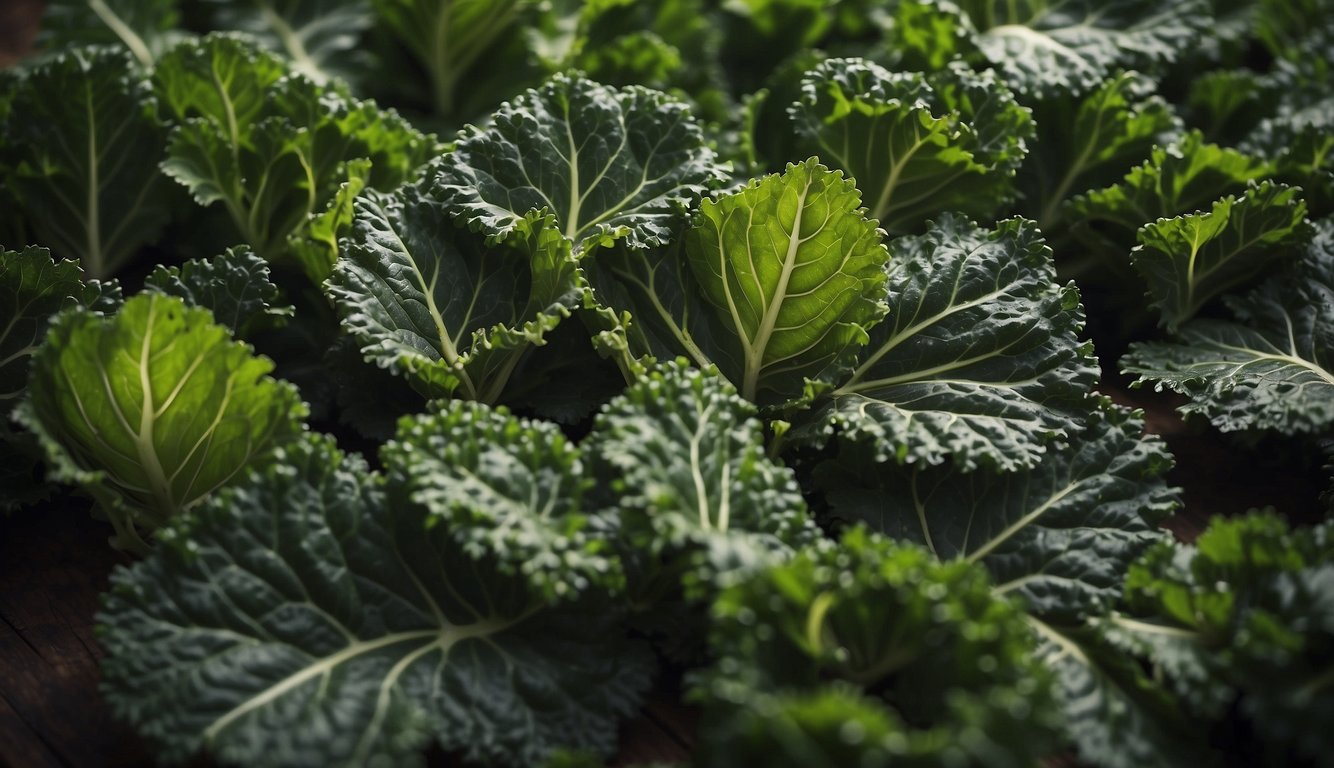
What are the nutritional benefits of different kale varieties?
Different kale varieties have varying nutritional benefits. For example, curly kale is high in fiber and vitamin C, while Red Russian kale is high in vitamin A and K. Tuscan kale, also known as Lacinato kale, is high in iron, calcium, and vitamin C. Knowing the nutritional benefits of different kale varieties can help you choose which ones to include in your diet.
How do Lacinato and other kale types differ in texture and flavor?
Lacinato kale, also known as Tuscan kale, has a smoother texture than curly kale and a slightly sweeter taste. Red Russian kale has a more delicate texture and a slightly nutty flavor. Siberian kale is similar to Red Russian kale in texture but has a milder flavor. Scotch kale has a more bitter taste and a tougher texture than other kale varieties.
Which kale varieties are best suited for raw salads?
Curly kale is the most commonly used kale for salads because of its texture and flavor. Lacinato kale is also good for salads because of its smoother texture. Baby kale is another option for salads because it is tender and has a mild flavor.
What are the ideal growing conditions for various kale types?
Kale is a cool-season crop that grows best in temperatures between 60-65°F. It requires full sun to partial shade and well-draining soil. Different kale varieties have varying growing conditions, but they all require consistent moisture and regular fertilization.
How many distinct varieties of edible kale exist, and what are their unique characteristics?
There are over 50 varieties of edible kale, each with its unique characteristics. Some of the most common varieties include curly kale, Red Russian kale, Lacinato kale, Siberian kale, and Scotch kale. Each variety has a different texture, flavor, and nutritional profile, making them suitable for different culinary applications.
